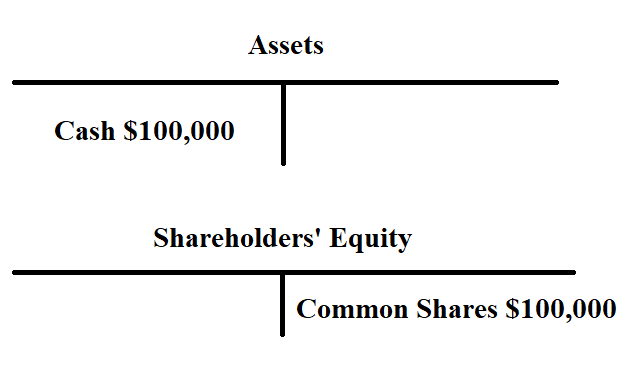
T-Account
A T-account is an informal term for a set of financial records that uses double-entry bookkeeping. The term describes the appearance of the bookkeeping entries. First, a large letter T is drawn on a page. The title of the account is then entered just above the top horizontal line, while underneath debits are listed on the left, and credits are recorded on the right, separated by the vertical line of the letter T. In double-entry bookkeeping, a widespread accounting method, all financial transactions are considered to affect at least two of a company’s accounts. One account will get a debit entry, while the second will get a credit entry to record each transaction that occurs.
The credits and debits are recorded in a general ledger, where all account balances must match. The visual appearance of the ledger journal of individual accounts resembles a T-shape, hence why a ledger account is also called a T-account.
A T-account is the graphical representation of a general ledger that records a business’s transactions. It consists of the following:
- An account title at the top horizontal line of the T
- A debit side on the left
- A credit side on the right
T- Account Recording
For different accounts, debits and credits may translate to increases or decreases, but the debit side must always lie to the left of the T outline and the credit entries must be recorded on the right side. The major components of the balance sheet—assets, liabilities, and shareholders’ equity (SE)—can be reflected in a T-account after any financial transaction occurs.
The debit entry of an asset account translates to an increase to the account, while the right side of the asset T-account represents a decrease to the account. This means that a business that receives cash, for example, will debit the asset account, but will credit the account if it pays out cash.
The liability and shareholders’ equity (SE) in a T-account have entries on the left to reflect a decrease to the accounts and any credit signifies an increase to the accounts. A company that issues shares worth $100,000 will have its T-account show an increase in its asset account and a corresponding increase in its equity account:

T-Account Advantages
T-accounts are commonly used to prepare to adjust entries. The matching principle in accrual accounting states that all expenses must match with revenues generated during the period. The T-account guides accountants on what to enter in a ledger to get an adjusting balance so that revenues equal expenses. A business owner can also use T-accounts to extract information, such as the nature of a transaction that occurred on a particular day or the balance and movements of each account.
T-accounts can also be used to record changes to the income statement, where accounts can be set up for revenues (profits) and expenses (losses) of a firm. For the revenue accounts, debit entries decrease the account, while a credit record increases the account. On the other hand, a debit increases an expense account, and a credit decreases it.
You may also like The Journals

Leave a Reply